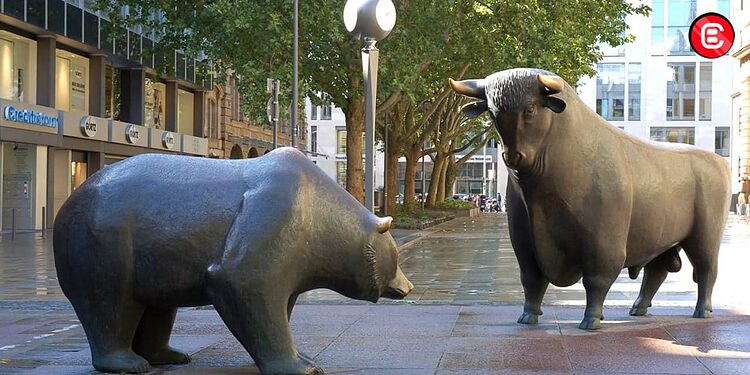Article contributed by Richard Paxton
Follow him on Medium
The cryptocurrency boom is the modern era’s equivalent of the gold rush. For those that have followed my writings, that statement probably sounds like a contradiction. For the past six months I have been predicting a dire future for crypto, and have been even harsher with my assessments of the NFT market and the concept of a decentralized finance (DeFi). However, you must understand that I view the decentralized world through a lens solely focused on financial fraud and money laundering.
That being said, I recognize that the human race is racing towards a highly digital and virtual world, one in which I either get on-board or get out of the way. Honestly though, I linger in the undecided camp and much of it has to do with the financial tomfoolery taking place in the NFT market. Each week a new piece of shocking news related to NFTs crosses our news feeds. Just this month we have been hit with news of racist NFTs, of how the very creation and existence of NFTs are destroying the environment, of NFT creators buying their own NFTs (insider trading?) and new wave financial crimes such as rug pulls, and now reverse rug pulls.
Perhaps though, the financial fraud and money laundering issues plaguing NFTs and cryptocurrency are just growing pains in the greater establishment of a fully decentralized financial system? The original gold rush (1848–1855) had its share of growing pains too, many of which were well documented and more tragic in human terms. That seven year span changed the course of history though, leading to the expansion of manufacturing, service industries, lumber, clothing, transportation, agriculture and retail businesses. Though the state of California had zero banks prior to the gold rush, it had become an economic powerhouse by the end of the century as a result of the gold rush.
If done right, decentralized finance platforms powered by cryptocurrency have the same power to create positive changes in the world as the gold rush, if not more. Sometimes, in order to create something revolutionary a concept, idea or product has to go through some serious growing pains before its full benefits can be realized by end users. It is, after all, a growth cycle like any other. The concept of decentralized finance, however, is evolving on the fly and in front of our very eyes, which makes this moment, at least for those paying attention, a fairly important one in human history.
Is it possible that I have, from a big picture point of view, become a bit bullish on decentralized finance? Anything is possible, right? I am a meta data nerd and so when I review pieces of data that show true forward progress, I tend to listen. There are big pieces of the decentralized finance puzzle being put into place right now, in spite of the financial fraud and money issues inherent with cryptocurrency. I thought it might help my readers better understand my mindset if I provided a few examples below of why I think the decentralization concept might be here to stay.
Here are those foundational examples:
JPMorgan Chase & Co.: one of the world’s most influential financial institutions is now the first bank to jump into in the metaverse, having recently opened a lounge in Decentraland called Onyx. In addition, JPMorgan has also released a whitepaper entitled, Opportunities in the Metaverse, published to help businesses navigate a somewhat confusing metaverse. For those still questioning the concept of decentralization, it is worth a read.
“We put together our white paper to help clients cut through the noise and highlight what the current reality is, and what needs to be built next in technology, commercial infrastructure, privacy/identity and workforce, in order to maximize the full potential of our lives in the metaverse.” — Christine Moy, JPMorgan’s head of crypto and the metaverse to Coindesk
META (Facebook): Apparently Mark Zuckerberg and Facebook have already burned over $500 million transitioning to META. For a company with the world’s largest user base, this move towards a decentralized platform at first seemed premature, but I think META has the resources to pull this off, so long as it can retain its Facebook users.
Switzerland, Singapore, El Salvador, et al: While I have covered the countries putting the crimp on cryptocurrency or threatening to (China and India), there are a lot more countries out there that are crypto-friendly. Granted these countries combined don’t match the populations of China and India, but the passion these countries have for decentralized finance is kind of contagious. Who wouldn’t want to experience Switzerland’s Crypto Valley?
DAOs: I am particularly intrigued by the emergence of Decentralized Autonomous Organizations (DAOs) and their ability to disrupt traditional sources of startup funding and perhaps even NASDAQ, how profits are shared among investors, how decisions are made and how the products and services offered by DAOs are rolled out. DAOs could, for example, only exist in the metaverse, while others might invest in physical assets, such as country clubs, something I covered in a previous article.
Image credit: Ewingmason
The world is changing quickly into a decentralized digital wonderland, full of opportunities, but also full of potholes, financial fraud and money laundering issues, which I believe are growing pains. Substantial growing pains for sure, but at the end of the day, just growing things. The gold rush is on. Are you or your business prepared to capitalize on it? Or are you sitting on the fence like me and studying the marketplace?






